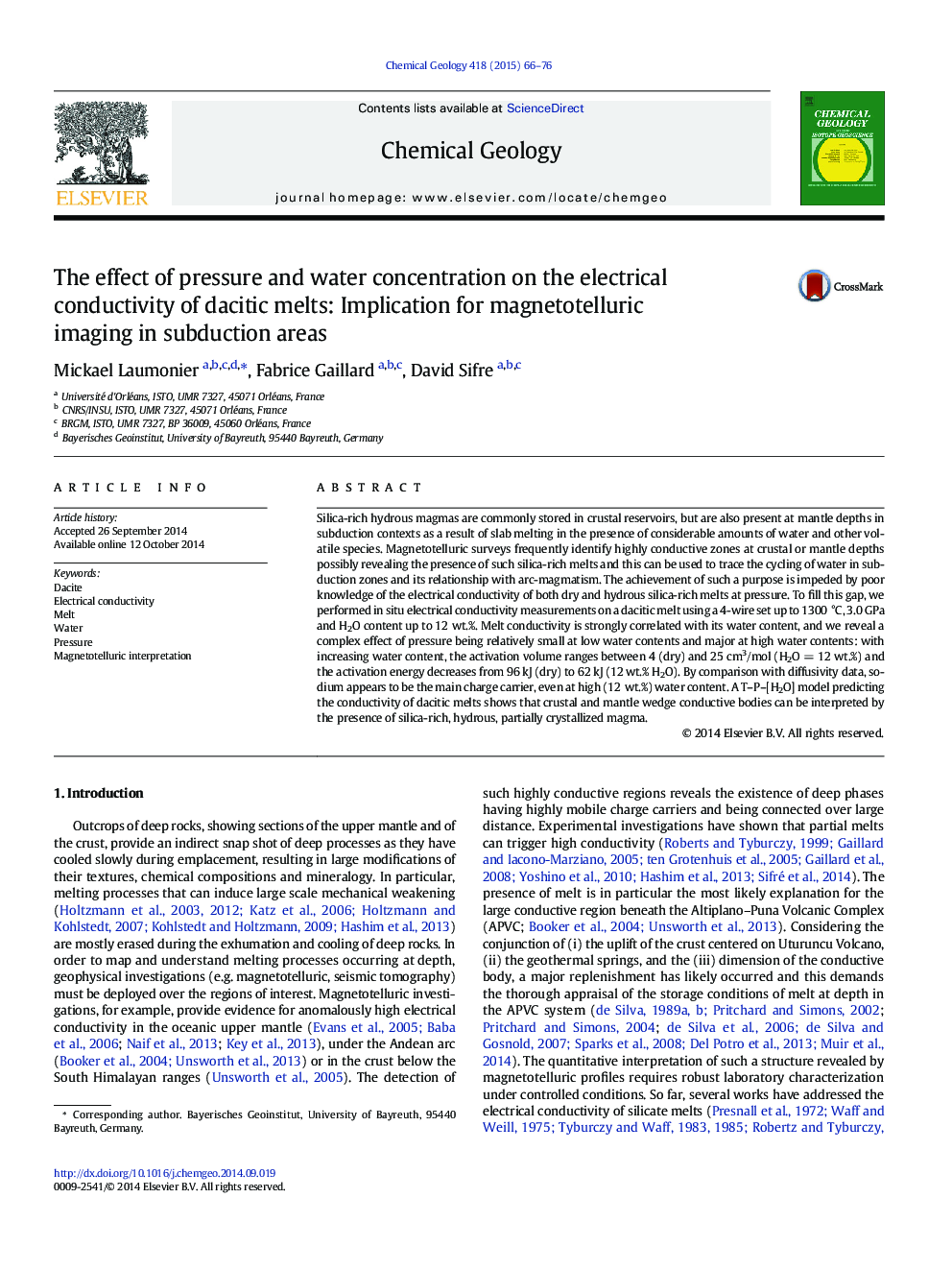| Article ID | Journal | Published Year | Pages | File Type |
|---|---|---|---|---|
| 6436193 | Chemical Geology | 2015 | 11 Pages |
â¢We performed high pressure high temperature experiments with in situ electrical measurements on dry and hydrated dacite.â¢A model depending on H2O, P and T was built from the data.â¢We discuss the electrical signature of potential reservoirs in the crust and water-rich felsic melts in the mantle.
Silica-rich hydrous magmas are commonly stored in crustal reservoirs, but are also present at mantle depths in subduction contexts as a result of slab melting in the presence of considerable amounts of water and other volatile species. Magnetotelluric surveys frequently identify highly conductive zones at crustal or mantle depths possibly revealing the presence of such silica-rich melts and this can be used to trace the cycling of water in subduction zones and its relationship with arc-magmatism. The achievement of such a purpose is impeded by poor knowledge of the electrical conductivity of both dry and hydrous silica-rich melts at pressure. To fill this gap, we performed in situ electrical conductivity measurements on a dacitic melt using a 4-wire set up to 1300 °C, 3.0 GPa and H2O content up to 12 wt.%. Melt conductivity is strongly correlated with its water content, and we reveal a complex effect of pressure being relatively small at low water contents and major at high water contents: with increasing water content, the activation volume ranges between 4 (dry) and 25 cm3/mol (H2O = 12 wt.%) and the activation energy decreases from 96 kJ (dry) to 62 kJ (12 wt.% H2O). By comparison with diffusivity data, sodium appears to be the main charge carrier, even at high (12 wt.%) water content. A T-P-[H2O] model predicting the conductivity of dacitic melts shows that crustal and mantle wedge conductive bodies can be interpreted by the presence of silica-rich, hydrous, partially crystallized magma.
